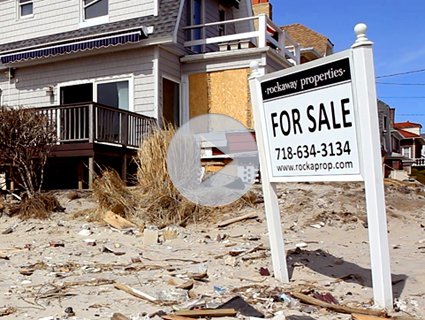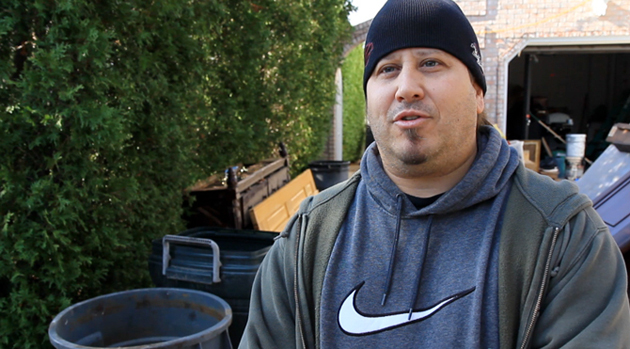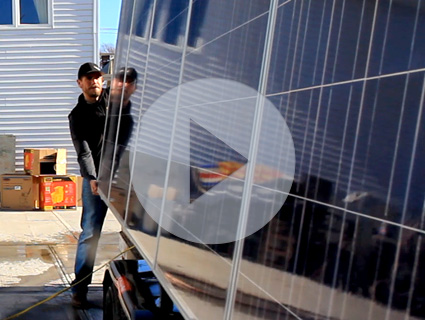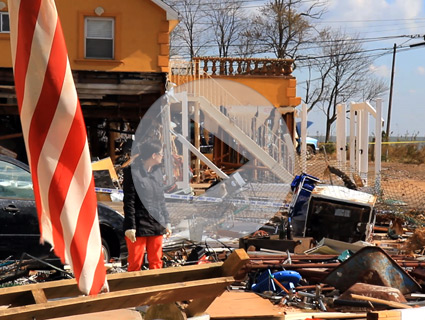
James West/Climate Desk
257 Beach 140th Street, a modest four-bedroom house blocks from the beach in Rockaways, Queens, is fairly unremarkable, but it put up a hell of a fight during Hurricane Sandy. While other houses just down the street were being ripped off their foundations, 257, which had been up for sale since before the storm, suffered only a little flooding in the basement. It’s otherwise unscathed, but even that damage was enough to knock a solid 10 percent off its list price (down to $799,000 from $890,000), enough to make first-time homebuyers Matthew and Jenny Daly take a closer look.
“There are more opportunities because of everything that’s happened in the last six months,” Matthew says.
In New York City alone, Sandy racked up $3.1 billion worth of damage to homes. Many of those properties in hard-hit areas like the Rockaways and the south shore of Staten Island are still empty, awaiting repairs, government buyouts, resident squatters, or like in the case of 257, a new owner ready to tackle a fixer-upper. Damaged homes are now on the market for as much as 60 percent off their pre-storm value, and local realtors say there’s a ready contingent of bargain-hunters waiting to pounce—sometimes, to the detriment of sellers.














